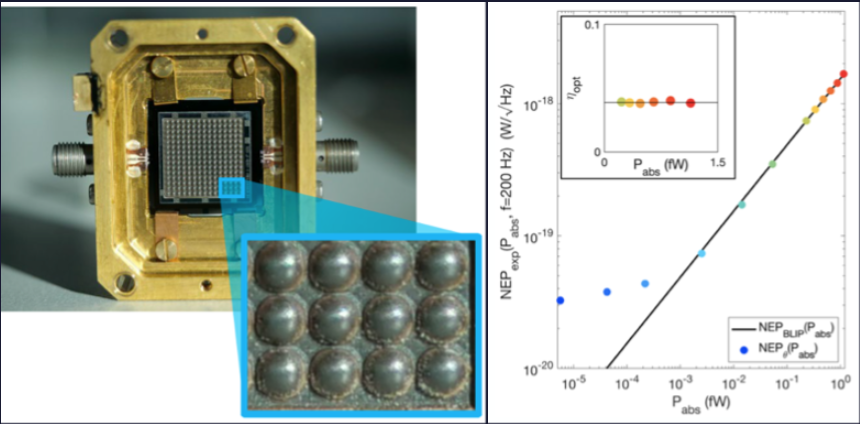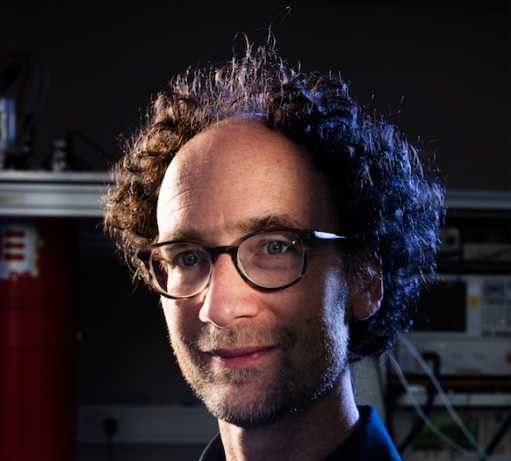Far-infrared astronomy is a relatively young field that observes the universe at wavelengths between 0.1 and 3 mm. Contrary to visible light, this radiation pierces through the dust clouds surrounding baby planetary systems in their formation process. Far-infrared observations are therefore crucial to understanding how planets, stars and galaxies form and evolve.
Whereas clouds in space are transparent for far-infrared, the opposite is true for earth’s atmosphere. Water vapour absorbs most of it, so telescopes have to be built at high and dry locations such as mountains in the desert. Although large fractions of the radiation do not reach earth’s surface even at those locations. In the end, space offers the best observing conditions.
Imaging KID arrays
Microwave Kinetic Inductance Detectors (MKIDs) combine sensitivity with the capability to construct large detector arrays. We develop this technology in close collaboration with TU Delft. MKIDs are based on a superconducting metal whose electric resistance disappears when it is cooled to low temperatures close to absolute zero. To make use of this property, we keep our MKIDs around a temperature of 0.1 degrees above zero—0.1 Kelvin. When a light ray hits the detector, the metal heats up and its superconducting state changes. This affects the electric current running through, which we observe in the readout signal. MKIDs are ideal to link in a large array because they are easy to read out all at once. To distinguish between pixels, we give each detector a slightly different length so their readout signal has a different frequency.

Figure 1 (left): scanning electron micrograph, with artificial colouring, of the SRON hybrid antenna coupled MKID. The inset shows an image of a few small lenses. Figure (right): principle of large MKID imaging arrays for sub-mm astronomy. The top panel shows the measured transmission through the readout line, showing ~900 resonance dips, one for each MKID detector.
SRON MKID’s
The MKIDs developed by SRON rank amongst the most sensitive in the world. They have been selected as the detector technology for NASA’s POEMM balloon telescope. Also they are part of NASA’s PRIMA satellite, which is currently in its preliminary study phase.

Figure 2: SRON MKIDs are successfully deployed at the dual-color AMKID instrument at APEX, in a project led by the Max Planck Institute für Radioastronomy in Bonn with more than 3000 pixels at 350 GHz and 21,000 pixels at 850 GHz. This picture shows one out of four AMKID detector array with 896 pixels for radiation detection at 350 GHz. All pixels are multiplexed on a single read-out chain, hence the two connectors (in and out) at the left.

Figure 3 (left): electron microscope of a KIDs that is made in the cleanrooms of SRON Leiden and in the Kavli cleanroom in Delft. Right: cross-section of an assembled KID.

Figure 4 (left): holder with a small, operational, KID detector array desiged for 7.5 THz; the zoomed-in area show the lens array from Veldlaser that is aligned (and glued) with micrometer precision on top of the wafer with the KID detectors. Right: noise performance at 1.5 THz of a KID, showing a noise level of 3 10-20 Hz/Hz0.5.




